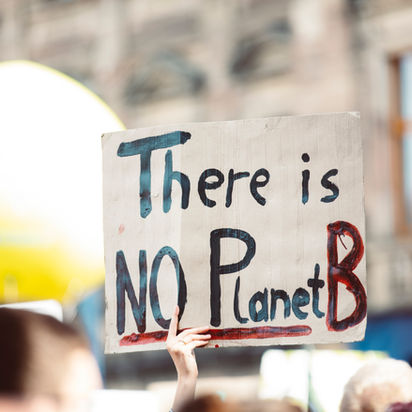
LIVING A SUSTAINABLE LIFESTYLE
At LivLush Global , we believe in living a sustainable lifestyle one that nourishes the body, mind, spirit and the world in which we live.
Whilst most of what we know of how to live is based on our family and cultural background, that does not have to be our destiny. We have the power to make conscious choices to restore balance and expand our awareness of peace, happiness, and wellbeing that is our true nature.
When you journey with us, explore and learn more about yourself and sustainability. Make lifestyle choices that nurture your mind, body and spirit, and are mindful of all living beings and the global environmental footprint.
#LIVLUSHGLOBAL is a community
pledging
to live a sustainable lifestyle
Join our community today to
raise awareness
and
take action

How To Raise Awareness
1. HEAD TO INSTAGRAM
2. UPLOAD A PIC THAT’S IMPORTANT TO YOUR PLEDGE TO INSTA STORIES
3. TYPE YOUR PLEDGE IN CAPS ON YOUR SELFIE
4. UPLOAD TO YOUR STORIES AND TO YOUR GRID
5. TELL YOUR COMMUNITY WHAT YOU ARE PLEDGING AND WHY
6. NOMINATE YOUR FRIENDS TO DO A PLEDGE
7. ADD #LIVLUSHGLOBAL AND @LIVLUSHGLOBAL AND KEEP US UPDATED ON HOW THE PLEDGE IS GOING
8. REMEMBER TO TAG US SO WE CAN REPOST AND SHARE YOUR PLEDGE WITH OUR COMMUNITY
9. SHARE THIS PAGE TO HELP OTHERS RAISE AWARENESS AND TAKE ACTION
Scientists have warned that carbon dioxide and other greenhouse gas emissions from Human activity– is a primary driver of climate change
To stabilize (or even reduce) concentrations of greenhouse gases in the atmosphere, the world needs to reach net-zero emissions. This requires large and fast reductions in emissions.
Global Greenhouse Gas by Sector
50 billion tonnes of Greenhouse gas (GHG) each year. This is more than 40% higher than emissions in 1990, which were around 35 billion tonnes.
GHG Impact on Our Planet
and Human Survival
72%
ENERGY
11%
AGRICULTURE
6%
INDUSTRY
3%
WASTE
2.%
SHIP FUELS
Flooding of islands and coastal cities. The Fifth Assessment Report of the United Nations Intergovernmental Panel on Climate Change estimated that by 2100 the sea level will be between 0.6 - 1.10 meters higher. Presently, one-third of the total human population, nearly 2.4 billion people, live within 100 km (60 miles) of an oceanic coast
Hurricanes will be more devastating. As the world warms, hurricanes and other tropical cyclones should get stronger, because warmer water provides more of the energy that fuels these storms.
Migration of species. Many animal species will be forced to migrate in order to survive the changes in the main climatic patterns altered by the progressive increase in temperatures. Human beings will also have to move: according to the World Bank, by 2050 the number of people forced to flee their homes due to extreme droughts or violent floods could reach 140 million.
Fertile areas become Desert. Global warming and deforestation are causing soil degradation and are contributing to the desertification of areas on the planet, which would destroy all the biological potential of affected regions, turning them into barren and unproductive land. As recognized by the UN 40% of the land has been degraded and lost its real value.
Diminished Agriculture and Livestock. Already the length of the growing season in large parts of the planet is altered. Similarly, changes in temperatures and seasons lead to the proliferation of insects, invasive weeds, and diseases which in turn affect crops. The same is happening with livestock: climatic changes are directly affecting important species in multiple ways: reproduction, metabolism, diseases.
Food shortages. The United Nations Food and Agriculture Organization (FAO) in its last biennial report warns that a decline in agricultural production would result in food shortages, most severely affecting sub-Saharan Africa and South Asia.
The spread of diseases and pandemics. The World Health Organization (WHO) states that global warming will cause infectious diseases such as malaria, cholera, or dengue to spread to many more areas of the planet and extreme heat will increase and aggravate cardiovascular and respiratory problems.
How To Take
Action
global TARGET
2020 - 2050
Reduce emissions over the next decade 2020 -2030 by 45%.
Net-zero emissions by 2050.
The earth's rise in temperature is kept below 1.5 °C
MITIGATION
TRAVEL GREEN
SWITCH TO CLEANENERGY
stop FOOD waste
reduce emmisions from INDUSTRIAL PROCESSING
stop
DEFORESTATION
Practice 5 R's
use clean energy for shipping and consumers buy LOCAL
Promote climate action among civil society and different institutions
Travel short distances by foot or bike.
Carpool.
Reduce air travel
Electric vehicles (EVs) offer a low-carbon alternative to gasoline-powered vehicles.
Travel by public transportation modes.
Use renewable energy to power everything from cell phones to your homes, offices, and factories.
Install efficient lighting, EnergyStar certified appliances.
Reduce the consumption of beef and lamb due to the high carbon intensity of these foods.
Limit consumption of cheese and milk the third and fourth highest emissions after beef and lamb.
Use perishables before their expiration date and buy only what you need including portions.
Compost to help keep plant and vegetation organic material out of landfills.
There are many ways to reduce greenhouse gas emissions from the industrial sector, including energy efficiency, use of renewable energy, and the more efficient use and recycling of materials.
Availability of green alternatives to iron , steel and cement in construction.
When forests are cleared or burnt the carbon stored in trees are released into the air.
To reduce the carbon footprint from deforestation stop destroying forests for land use, farming, or any other human activity.
Plant more trees in areas where deforestation has occurred as well as in urban areas.
Use vertical farming methods to grow fruit and vegetables - Convert empty buildings and rooftops into vertical farms.
The Five R's of Sustainability: Refuse, Reduce, Reuse, Repurpose and then Recycle
Cut sulfur content in bunker fuel and switch to clean energy sources to power ships.
Buy Local to reduce freight transport.
Climate action policy builds resilience to climate change by supporting and financing those objectives. The Paris Agreement (2015) was the first major international agreement towards those ends. At COP21, when it was signed, 174 countries and the European Union agreed to work with the goal of keeping global warming below 2°C.
Goal 13 of the United Nations Sustainable Development Goals calls for urgent action to combat climate change and its impacts. It is intrinsically linked to all 16 of the other Goals of the 2030 Agenda for Sustainable Development. To address climate change, countries adopted the Paris Agreement to limit global temperature rise to well below 2 degrees Celsius. Learn more about Goal 13, and for the latest United Nations climate news, visit un.org/climatechange.
Countries
Building Resistance
countries least vulnerable
countries most vulnerable
Norway, Sweden, Finland, New Zealand, and Estonia are among five of the least vulnerable nations to climate change in terms of vulnerability to the physical impacts of climate change, sensitivity to extreme weather, and the ability to respond to changes. These countries’ comparative lack of vulnerability stems largely from the actions they have taken to date – strategies that have successfully been employed to help cope with a rapidly changing climate – rather than their mere geographic situation.
Whilst the emissions rates are the highest in the world amongst developed countries these countries are both less vulnerable and better equipped to deal with the challenge of climate change. Developed nations have adequate preparation with climate change impact owing to their finances and technology. However, these developed countries will not escape the costs of climate change - particularly given its significant coastline where rising sea levels pose an obvious threat.
Research by the Notre Dame Global Adaptation Index, or ND-GAIN, looks at a country's vulnerability to climate change and other global challenges, set against its ability to improve resilience.
The Arctic, Africa, small islands, and Asian mega deltas are regions that are likely to be especially affected by future climate change.
Africa is one of the most vulnerable continents to climate variability and change because of its dependence on rainfall for agriculture, low adaptive capacity due to poverty, and governance generally fails to prioritize and act on climate change
Countries enduring conflict are less able to cope with climate change because their ability to adapt is weakened by conflict. In a conflict situation, authorities and institutions are not only weak, but also preoccupied with security priorities.



























